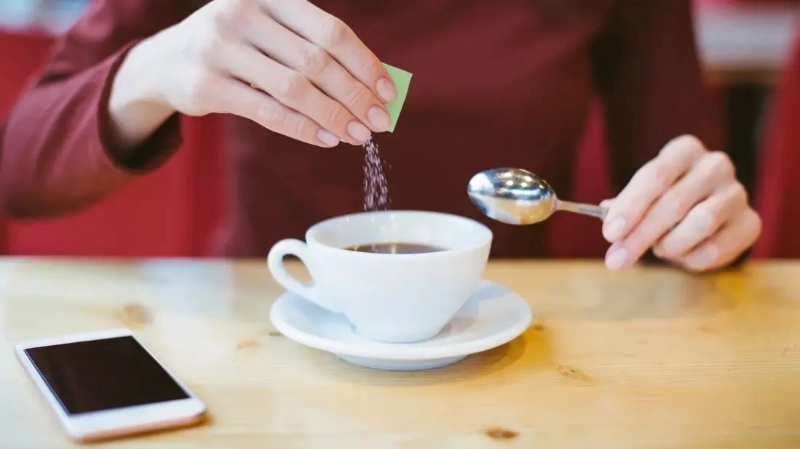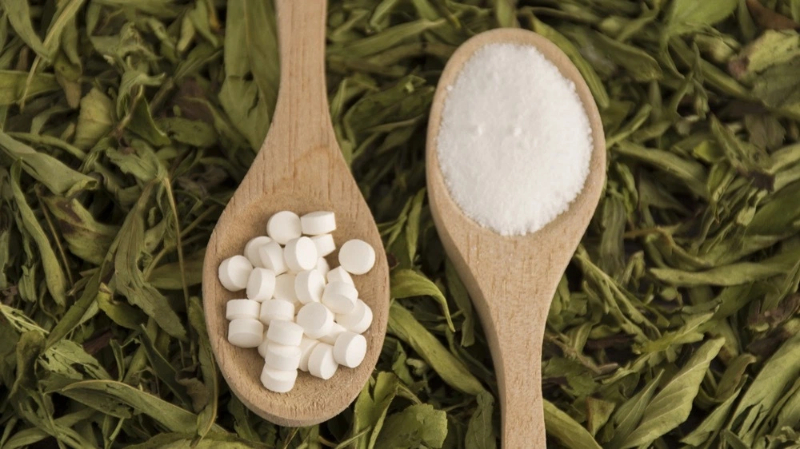







Content Menu
● What Stevia Is and How It Is Processed
● Stevia and Sugar Alcohol: Core Differences
● Regulatory Landscape and Safety Considerations
● Applications: Formulation Strategies and Use Cases
● Processing Considerations for Stevia Blends
● Industrial and Commercial Packaging Considerations
● Your Factory Advantage: Why Partner With Us
● Practical Guidance for Implementing Stevia-Based Solutions
● Case Study Scenarios (Illustrative)
● Operational and Quality Assurance Considerations
● FAQ
>> 1. Is Stevia a sugar alcohol?
>> 2. Why do some products blend Stevia with sugar alcohols?
>> 3. Are there safety concerns with Stevia?
>> 4. What regulatory steps are needed to market Stevia-based blends internationally?
>> 5. How can a factory support OEM/ODM for Stevia-based products?
Stevia has emerged as one of the most popular natural sweeteners in global markets, prized for its zero-calorie sweetness derived from steviol glycosides. This article clarifies common myths about Stevia by contrasting it with sugar alcohols, while also highlighting how Stevia fits into modern food, beverage, and health product development. Our China-based factory specializes in natural sweeteners, functional polyols, and dietary fibers, offering blended sweetener development, tablet production, and comprehensive OEM/ODM services for overseas manufacturers. By combining technical insights with practical guidance, this piece aims to support international partners in making informed, scalable decisions when designing Stevia-based blends and end-products.

Stevia rebaudiana leaves contain steviol glycosides, the compounds responsible for intense sweetness. The processing chain typically includes leaf harvesting, drying, aqueous or ethanol extraction, purification, and standardization to achieve defined purity (often focusing on Rebaudioside A and related glycosides). Regulatory status varies by region, with some jurisdictions granting GRAS or equivalent status, while others require explicit approvals or labeling regimes. In industry, Stevia is frequently used as a primary high-intensity sweetener, and it is common to pair Stevia extracts with other sweeteners or polyols to modulate taste, mouthfeel, and aftertaste. This practical blending approach aligns with our capabilities in blended sweetener development and end-to-end OEM/ODM services, enabling tailored sweetness profiles for beverages, dairy, baked goods, and functional foods.
A common question is whether Stevia is a sugar alcohol. The short answer is no. Sugar alcohols (for example, erythritol, xylitol, and sorbitol) are polyols that provide fewer calories than sugar and can have laxative effects in some individuals at high intake. Stevia, by contrast, is a non-nutritive, zero-calorie sweetener derived from plant glycosides. The metabolic pathways and labeling implications are distinct, which matters for formulation, nutrition labeling, and consumer perception. In practice, many products blend Stevia with sugar alcohols to balance sweetness intensity, mouthfeel, and glycemic response, requiring careful formulation and quality control—areas where our OEM/ODM capabilities can deliver robust, scalable solutions.
Regulatory frameworks for Stevia-based ingredients emphasize purity, stability, and accurate labeling of steviol glycosides. In many regions, steviol glycosides meet approved use levels with specific purity criteria, and manufacturers must provide documentation such as certificates of analysis, stability data, and production traceability. When blends are used, compliance also extends to the permissible levels of each component, including sugar alcohols, and to labeling conventions that reflect the overall nutritional and caloric profile. From a production perspective, maintaining consistent glycoside composition and purity is critical for flavor consistency, consumer acceptance, and regulatory compliance. Our factory offers rigorous QA/QC workflows, supplier audits, and documentation support to ensure smooth market entry across multiple regions.
Stevia's potency enables small addition levels to achieve desired sweetness, but formulation often benefits from strategic blending. For beverages, Stevia provides clean sweetness with minimal caloric impact, while blending with sugar alcohols can improve mouthfeel, reduce aftertaste, and help with crystallization control in certain products. In dairy, Stevia-based blends can contribute to a pleasant sweet profile without sweetness runaway or off-notes. In baked goods and functional foods, heat stability and flavor masking become important considerations, and our blending expertise helps ensure stability across processing conditions. Our end-to-end services cover pilot testing, scale-up, and tablet production if required, enabling overseas manufacturers to bring Stevia-based products to market efficiently.

Key parameters in Stevia-based formulations include solubility, taste masking of bitterness or licorice-like notes at certain glycoside levels, and interaction with other ingredients such as acids, salts, and minerals. Temperature stability matters for heat-processed products, while water activity and pH can influence sweetness perception. When integrating sugar alcohols, engineers must monitor potential digestive tolerance issues and cumulative sweetness to avoid off-tastes or textural inconsistencies. Our facilities are equipped to optimize these variables through controlled pilot runs, sensory validation, and iterative formulation adjustments, delivering reliable, scalable blends suitable for international markets.
For international manufacturers, packaging and labeling strategies are critical, particularly in clean-label claims and regulatory compliance. Stevia-based blends may be offered in bulk powders, agglomerates, or coated beads, while tablet forms can be developed for convenient dosing in dietary supplements or fortified foods. Our OEM/ODM services encompass packaging design collaboration, regulatory documentation, and scalable production to meet varying batch sizes and distribution networks. Across formats, ensuring consistent potency, flavor, and physical properties is essential to maintain product quality and consumer satisfaction.
- Comprehensive sweetener solutions: Our core strengths include natural sweeteners, functional polyols, and dietary fibers, enabling the design of sophisticated blends tailored to specific product categories and regulatory requirements.
- End-to-end development: From concept and pilot testing to scale-up and commercial production, we provide a seamless pathway for Stevia-based blends, including tablet manufacturing where appropriate.
- Regulatory and quality leadership: Our QA/QC workflows, supplier qualification, and documentation support help overseas manufacturers navigate global markets with confidence.
- Customization and flexibility: OEM/ODM capabilities allow us to adapt formulations, packaging, and process parameters to fit diverse customer requirements, ensuring reliability and time-to-market advantages.
- Technical collaboration: Our R&D team can assist with flavor optimization, stability studies, and sensory analysis to deliver Stevia-based products that meet consumer expectations while maintaining clean-label integrity.
- Start with a needs assessment: Define target consumer segments, regulatory jurisdictions, and product categories to determine the optimal Stevia-based blend.
- Plan pilot studies: Establish taste, stability, and mouthfeel benchmarks; test different ratios of Stevia extracts to sugar alcohols or other sweeteners to achieve desired profiles.
- Regulatory readiness: Prepare technical dossiers, purity specifications for steviol glycosides, and labeling plans aligned with intended markets.
- Supplier due diligence: Evaluate Stevia extracts for glycoside composition (e.g., Rebaudioside A content), purity, and batch-to-batch consistency; assess compatibility with other ingredients in the formulation.
- Scale-up strategy: Map the journey from pilot to commercial production, including process optimization, packaging options, and quality assurance milestones.
- Beverage application: A ready-to-drink beverage seeking zero-calorie sweetness with a clean label can benefit from a Stevia-dominant blend, complemented by a small percentage of erythritol to smooth aftertaste and improve mouthfeel. Our blending approach ensures regulatory compliance and consistent flavor across production lots.
- Dairy product: A yogurt substrate aiming for reduced sugar content may leverage Stevia-based sweetness with a secondary polyol to stabilize texture and reduce potential bitterness, delivering a smooth mouthfeel without compromising flavor.
- Bakery item: In a reduced-sugar cookie formulation, Stevia-based sweetness paired with a carefully calibrated sugar alcohol can help achieve browning behavior and texture while maintaining overall sweetness perception.
- Documentation and traceability: Maintain full lot records, supplier certificates, and testing results to ensure compliance and facilitate audits in various markets.
- Sensory evaluation: Implement structured tasting panels and statistical analysis to monitor flavor profiles across production runs, guiding formulation refinements as needed.
- Allergen and impurity controls: Ensure clean-label claims are accurate and that potential cross-contamination risks are managed in blended products.
Stevia stands apart from sugar alcohols as a natural, zero-calorie high-intensity sweetener derived from steviol glycosides. Blending Stevia with sugar alcohols or other sweeteners offers flexible pathways to tailor sweetness, mouthfeel, and energy content for a wide range of beverages, dairy products, baked goods, and functional foods. For international manufacturers seeking reliable, scalable solutions, our China-based factory provides end-to-end capabilities—from concept to commercial production—specializing in natural sweeteners, functional polyols, and dietary fibers, with blended-sweetener development, tablet production, and comprehensive OEM/ODM services. Together, these offerings enable rapid product development, regulatory compliance, and dependable supply chains to meet global market demands.

No. Stevia is a high-intensity, zero-calorie natural sweetener derived from steviol glycosides, while sugar alcohols are polyols such as erythritol, xylitol, and sorbitol that provide fewer calories than sugar but can cause digestive effects in some individuals.
Blends balance sweetness intensity, improve mouthfeel, reduce aftertaste, and adjust caloric and glycemic profiles while maintaining clean-label appeal.
Purified steviol glycosides have regulatory approval in many regions when used within approved levels; as with any ingredient, consider individual sensitivities and ensure quality control.
Regulatory steps typically include regional approvals or GRAS-like determinations, purity specifications for steviol glycosides, appropriate labeling, and compliance with local food additive norms.
By offering formulation development, pilot testing, scale-up, blend optimization, packaging design, regulatory documentation, and production support for tablets or finished goods as needed.
[1](https://www.goodrx.com/well-being/diet-nutrition/stevia-bad-for-you)
[2](https://voliwellness.com/blogs/news/stevia-vs-artificial-sweeteners-and-alcohol-sugars-exploring-the-health-benefits)
[3](https://www.reddit.com/r/nutrition/comments/199duhm/is_stevia_leaf_the_same_or_similar_as_sugar/)
[4](https://www.healthline.com/nutrition/erythritol-vs-stevia)
[5](https://www.mayoclinic.org/healthy-lifestyle/nutrition-and-healthy-eating/in-depth/artificial-sweeteners/art-20046936)
[6](https://integrativeurgentcare.com/what-is-healthier-natural-sugar-table-sugar-artificial-sweeteners-or-sugar-alcohols/)
[7](https://www.health.harvard.edu/blog/how-healthy-is-sugar-alcohol-202312183002)
[8](https://www.health.com/erythritol-vs-stevia-8694550)
[9](https://www.webmd.com/food-recipes/what-is-stevia)
